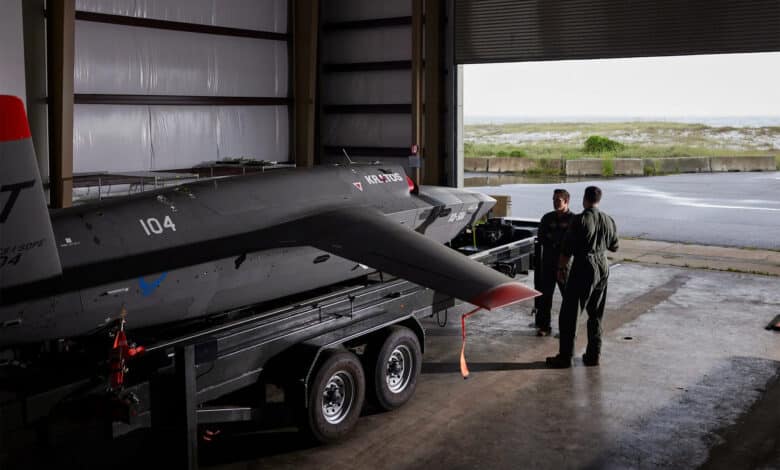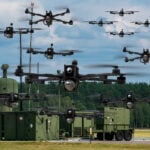The New York Times – A.I. Brings the Robot Wingman to Aerial Combat

The New York Times just published an article on the United States Air Force’s efforts in integrating AI into its operations. Titled “A.I. Brings the Robot Wingman to Aerial Combat” describes increasing Pentagon’s efforts to maintain the country’s military edge in an increasingly competitive global landscape. The Air Force’s efforts are not just limited to the skies; they are also exploring the potential of AI on the ground and in cyberspace.
One of the most notable advancements is the development of a drone, which was highlighted in the article. This drone is designed to operate autonomously, making decisions in real-time based on the data it collects. Its capabilities are a testament to the rapid advancements in AI technology and its potential applications in military operations. The drone’s ability to operate without human intervention can provide the Air Force with a significant advantage, especially in reconnaissance missions where speed and stealth are paramount.
The Air Force is also investing in training its personnel to work alongside these AI systems. This involves not just understanding the technical aspects but also the ethical considerations. The goal is to ensure that the human operators can trust the AI’s decisions and that the AI operates within the bounds of established rules of engagement.
The integration of AI into the Air Force’s operations is a part of a broader push by the U.S. military to adopt cutting-edge technologies. The Pentagon has recognized the importance of staying ahead in the technological race, especially with rivals like China and Russia making similar advancements. The U.S. military’s focus on AI is not just about enhancing its capabilities but also about ensuring national security in the face of evolving threats.
The U.S. Air Force’s commitment to integrating AI into its operations underscores the transformative potential of this technology in modern warfare. With the development of autonomous drones and the training of personnel to work seamlessly with AI, the Air Force is positioning itself at the forefront of this technological revolution.
For 30+ years, I've been committed to protecting people, businesses, and the environment from the physical harm caused by cyber-kinetic threats, blending cybersecurity strategies and resilience and safety measures. Lately, my worries have grown due to the rapid, complex advancements in Artificial Intelligence (AI). Having observed AI's progression for two decades and penned a book on its future, I see it as a unique and escalating threat, especially when applied to military systems, disinformation, or integrated into critical infrastructure like 5G networks or smart grids. More about me, and about Defence.AI.











































